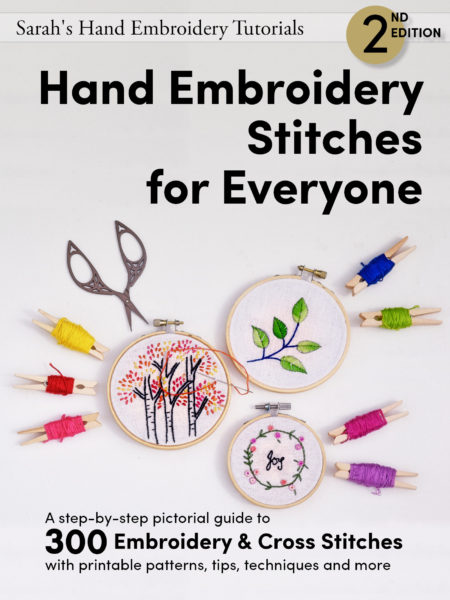
About Battlement Couching
The Battlement Couching is an exciting variation of Lattice Couching that allows us to play around with colors to create a beautiful shade while creating fillings. It uses multiple layers of laid thread and a final couching to pin down all the layers closer to the fabric. Each layer is placed to the side of the earlier ones. You can use different colors for each layer to create a beautiful visual impact.
How to do Battlement Couching
 |
 |
| Fig 1: Lay rows of vertical straight stitches to cover the pattern. I begin with the darkest shade. | Fig 2: Now, lay the horizontal stitches over the vertical stitches, as shown. |
 |
 |
| Fig 3: Next, make another layer of vertical stitches right next to the earlier ones. I use a lighter shade. | Fig 4: I make horizontal stitches right next to the earlier horizontal stitches. Remember to keep the stitches on the side of the earlier stitches and not right on top. |
 |
 |
| Fig 5: I make the third layer of vertical stitches using a much lighter shade. | Fig 6: My pattern reminds me of a waffle after finishing the third layer of the horizontal stitches |
 |
 |
| Fig 7: I work my final layer using a deep red shade of thread. | Fig 8: Now, you will start couching down the intersections of the ONLY the final layer- in this case, the layer done in red. I am using the same color to do the couching. I use a small diagonal stitch to pin down the final layer. No need to do cross-stitch. |
 |
|
| Fig 9: When the final layer is couched down, it pushes down the other layers flat to the ground fabric. You may add more layers to fill the spaces completely. |
Learn this stitch along with 305 other stitches from our 600-page eBook.

 Sarah has been researching and sharing hand embroidery lessons for over 17 years, making it accessible to everyone around the globe.
Sarah has been researching and sharing hand embroidery lessons for over 17 years, making it accessible to everyone around the globe.





Why is it called “battlement” couching?
Hi RockSea. ❤️
Interesting question. I must have pondered over it too. My best answer is that this stitch could remind us of a battlement? A battlement is a wall or parapet with gaps through which the fort or castle is guarded. These gaps are evenly spaced. This stitch has layers of laid thread with gaps that are evenly spaced. Makes sense?